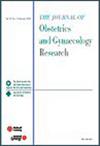Defecation disorder after anterior pelvic exenteration
Abstract
Aim
Anterior pelvic exenteration preserves rectal function. However, we observed postoperative defecation disorders, mainly frequent, divided, and watery stools, that are not transient and persist even after hospital discharge. No reports of defecation problems after anterior pelvic exenteration for gynecological malignancies exist. Therefore, we evaluated defecation status after anterior pelvic exenteration for gynecological malignancies.
Methods
Sixteen patients who underwent anterior pelvic exenteration in our department between 2012 and 2022 were included. For comparison, 132 radical hysterectomy and 13 radical cystectomy cases were also included. The postoperative defecation frequency and stool form were retrospectively evaluated.
Results
Patients who underwent rectal mobilization, laparoscopy, and prior hysterectomy had more frequent defecation 8–14 days postoperatively than those who did not. Laparoscopy and rectal mobilization were plausible causes of increased defecation frequency after anterior pelvic exenteration. Anterior pelvic exenteration with rectal mobilization was associated with more frequent defecation than radical hysterectomy and radical cystectomy, and laparoscopic-anterior pelvic exenteration was associated with more frequent stools than laparoscopic- radical hysterectomy and laparoscopic-radical cystectomy. However, there was no difference in defecation frequency among laparotomic-anterior pelvic exenteration, laparotomic-radical hysterectomy, and laparotomic-radical cystectomy. Anterior pelvic exenteration with rectal mobilization and laparoscopic-anterior pelvic exenteration had higher Bristol Stool Form Scale scores than radical hysterectomy and laparoscopic-radical hysterectomy, respectively.
Conclusions
In anterior pelvic exenteration requiring the preservation of defecatory function, patients can experience postoperative frequent watery stools. Prospective studies are needed to validate these findings in larger cohorts.

 求助内容:
求助内容: 应助结果提醒方式:
应助结果提醒方式:


